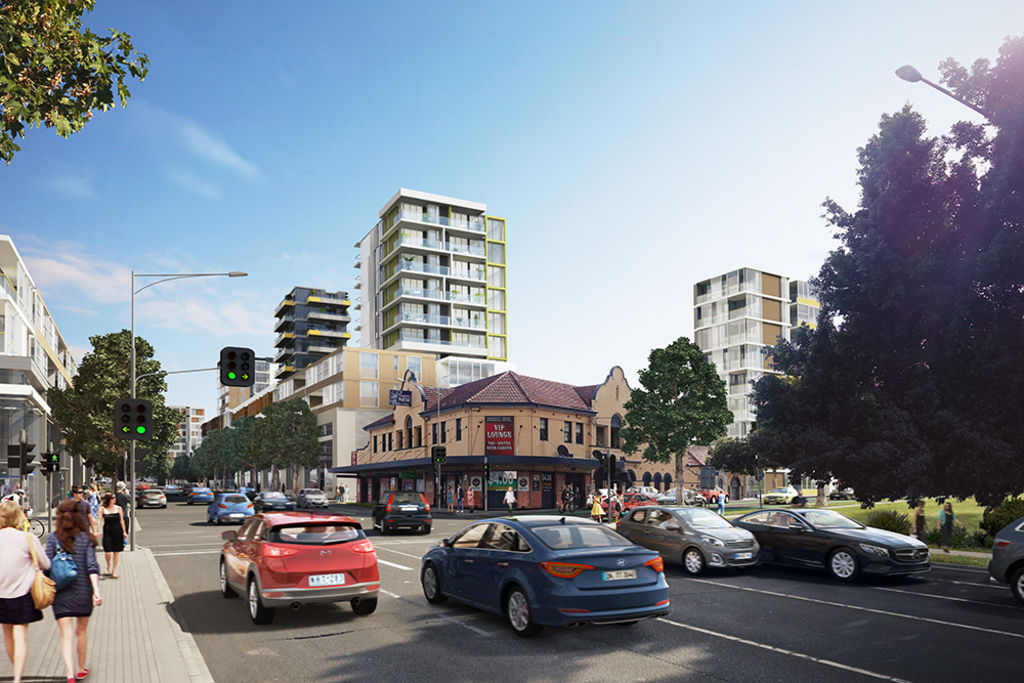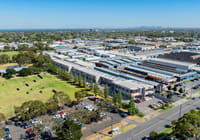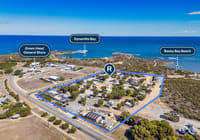
Developers could lose interest in building along Parramatta Road if delays continue, expert says
The state government might have unveiled its grand plans for a revitalised Parramatta Road, but a desire to see WestConnex finished and slow planning approval could see developers lose interest in projects along the route, leading industry expert says.
Chris Johnson, chief executive of Urban Taskforce, an organisation representing some of the country’s biggest developers, said the approval of large-scale, population-boosting projects in the precinct was being stymied by a lack of planning coordination between local government and the Greater Sydney Commission, which is now in charge of the revitalisation along Parramatta Road.
“I don’t think it [Parramatta Road] is [undergoing change]. A lot is still on hold with the district plans [from the Greater Sydney Commission], they are still fairly nebulous. The Local Environment Plans from local councils do not allow for population growth there,” Mr Johnson said.
He said the state government’s desire to get the 33-kilometre WestConnex motorway project – due for completion in 2023 and set to divert 50,000 cars each day from Parramatta Road – completed before focusing on implementing the plan was putting a halt to major plans.
“The state government is waiting for WestConnex to be completed,” said Mr Johnson, adding “a lot of bigger projects are sitting in limbo”.
The key issue with this strategy was timing the market, he said.
While property prices were hot now, and it’s a “good time to be getting new development”, previous experience showed this may not always be the vase.
“While the property market is hot now, it may not be in four years time,” he said.
Mis-timing the market could see developers shying away from buying in the precinct, and in the process would “miss the opportunity to create jobs”.
 A rendering of the approved project at 188 Parramatta Road, Auburn. Photo: Supplied
A rendering of the approved project at 188 Parramatta Road, Auburn. Photo: Supplied
The news comes as JLL brings to market one of the first major development sites in the precinct following the state government’s announcement last year that 27,000 new dwellings were destined for the Parramatta Road corridor between Homebush and Camperdown.
The 5223-square-metre site, at 188-194 Parramatta Road and 76-80 Macquarie Road, Auburn, currently housing a mix of vacant land, vacant dwellings and commercial properties, has development approval for 268 hotel rooms, a permitted gross floor area of 15,669 square metres and office space of 1032 square metres.
JLL’s senior executive, metropolitan sales and investments NSW, Gary Mason, said that they expected increasing developer interest in the area off the back of the revitalisation announcement.
“There are a number of local developers assessing opportunities around this region, keen to get a foothold in this developing precinct,” Mr Mason said.
“We expect more mixed-use opportunities like this to be offered to the market in the future, as an increase in people living and working in the area strengthens need and demand for these type of assets.”
The government released a $31 billion redevelopment plan to revitalise Sydney’s oldest highway at the end of last year.
Set out over 30 years, it incorporated 27,000 new dwellings and a focus on creating jobs in the precinct, with the plan forecasting an additional 50,000 jobs in the area from Homebush to Haberfield.
Responsibility for overseeing the strategy will be assumed by the Greater Sydney Commission.
A Greater Sydney Commission spokesperson said that the planning minister had directed local councils to take the Parramatta Road Corridor Urban Transformation Strategy into consideration when assessing planning applications, but that the plan was being implemented “through existing planning processes”.
“The Minister for Planning has issued a direction to councils requiring them to take into account the strategy when assessing all planning proposals covering the Parramatta Road corridor,” the spokesperson said.
“There is a supporting implementation plan – which identifies the priority areas for rezoning and the infrastructure required to support land use change – to help implement the strategy and ensure change and growth occurs in a staged and coordinated manner.”










